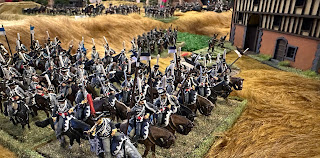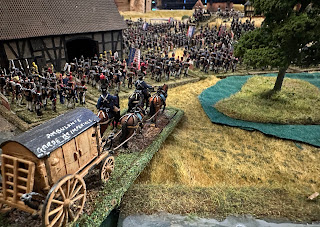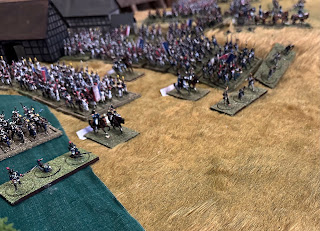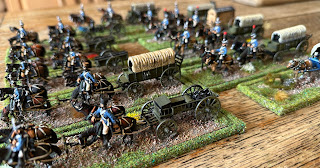Napoleonics20/20
Thursday, 10 July 2025
Tuesday, 17 June 2025
Monday, 16 June 2025
Saturday, 7 June 2025
Tuesday, 13 May 2025
French wagons and accessories.
We have another Napoleonic game to look forward to on the 31st May and 1st June. There will be approx 4,000+ figures on a 22' long table. These chaps have just been completed so should make an appearance. Even the French ambulance might have a role to play. (in the forthcoming game, will be on loan to MacDonald when he faces Blucher.)
The wagons etc are a mixture of Art Miniaturen and Franznap. Most of the train drivers are Hagen with both Hagen heads and Art Miniaturen heads. The two shorter ammunition wagons have Art Miniaturen drivers both with post Bardin uniforms. (I prefered the Guard riders to have a plume so they stand out) These manufacturers are basically the best money can buy for 20mm or 1/72 scale Napoleonics in metal. Each manufacturer has a unique set of figures to buy and with careful cherry picking, they really add something to the tabletop IMHO. Enjoyed doing these.....though the traces are time consuming, they compliment the end product.
Three more to do, and then another three Austrian wagons to complete.
PS Apologies for the lack of being able to make comments.....I simply have no idea how to "allow"....
Subscribe to:
Posts (Atom)

































